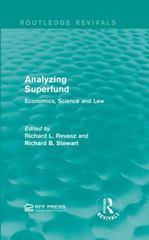Answered step by step
Verified Expert Solution
Question
1 Approved Answer
In 1950, the world produced more than 2 million tons of plastic per year. By 2015, this annual production swelled to 419 million tons and
In 1950, the world produced more than 2 million tons of plastic per year. By 2015, this annual production swelled to 419 million tons and exacerbating plastic waste in the environment. Shockingly, National Geographic found that 91% of all plastic that has ever been made is not recycled, representing not only one of the biggest environmental problems of our lifetime, but another massive market failure. Considering that plastic takes 400 years to decompose, it will be many generations until it ceases to exist. There's no telling what the irreversible effects of plastic pollution will have on the environment in the long run. https://earth.org/the-biggest-environmental-problems-of-our-lifetime/ 3. Distinguish between cumulative and non-cumulative pollutants and give an example of each. Is plastic a cumulative or non-cumulative pollutant? Explain. [6] 4. Discuss market failure in the context of the passage above
Step by Step Solution
There are 3 Steps involved in it
Step: 1

Get Instant Access to Expert-Tailored Solutions
See step-by-step solutions with expert insights and AI powered tools for academic success
Step: 2

Step: 3

Ace Your Homework with AI
Get the answers you need in no time with our AI-driven, step-by-step assistance
Get Started


